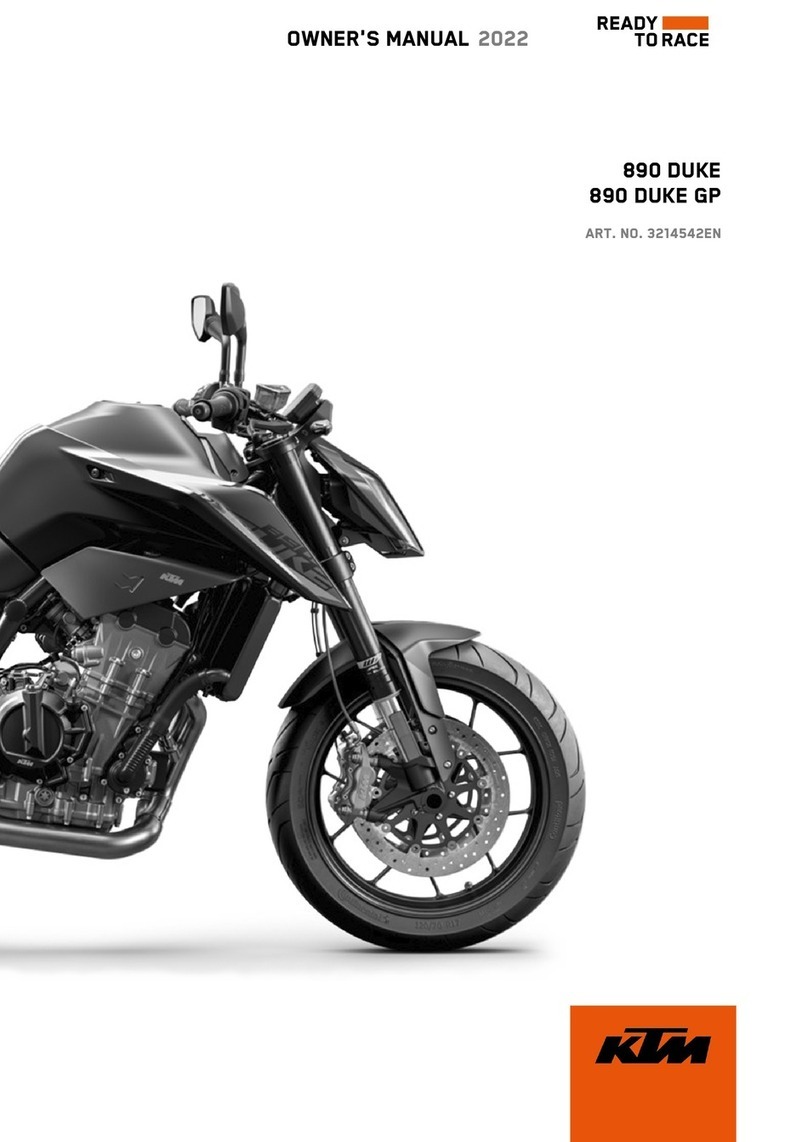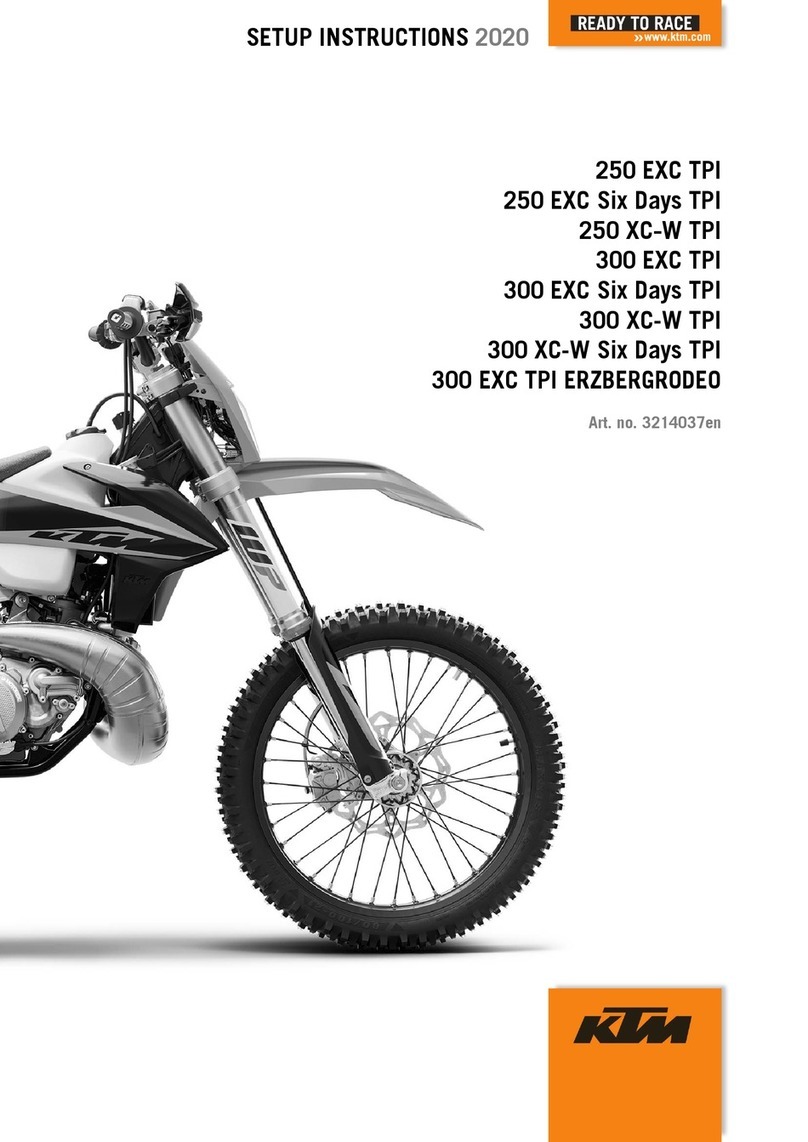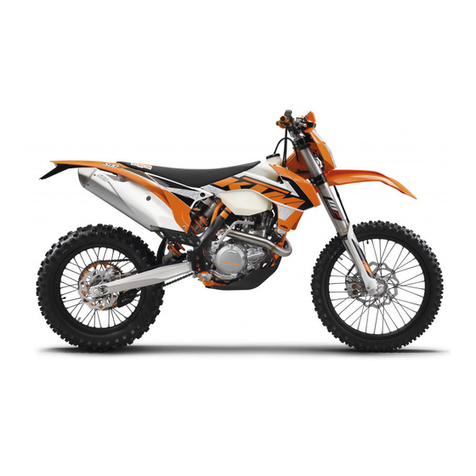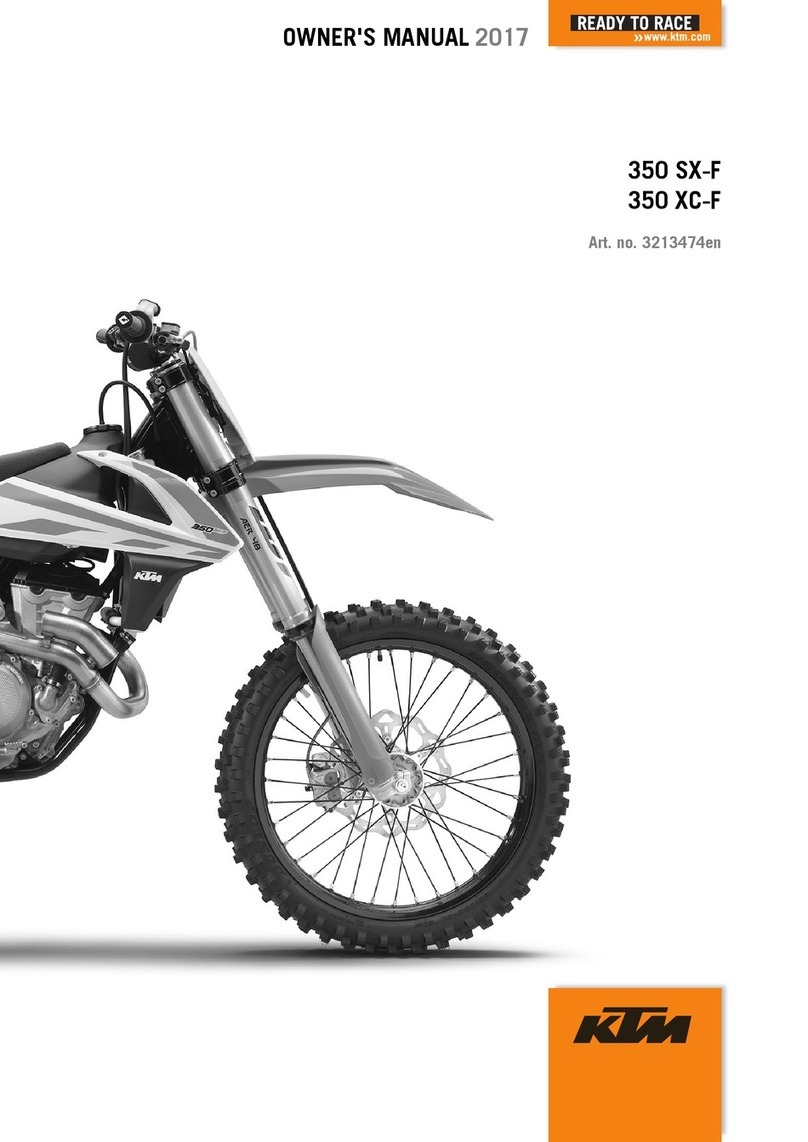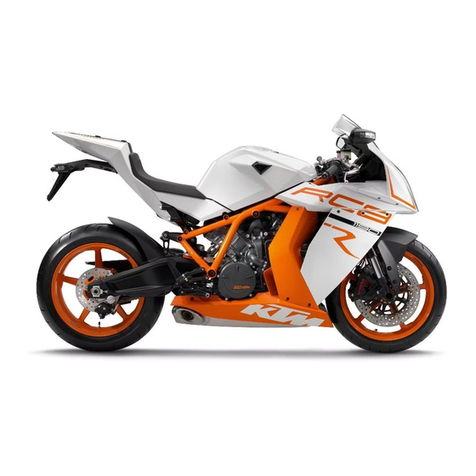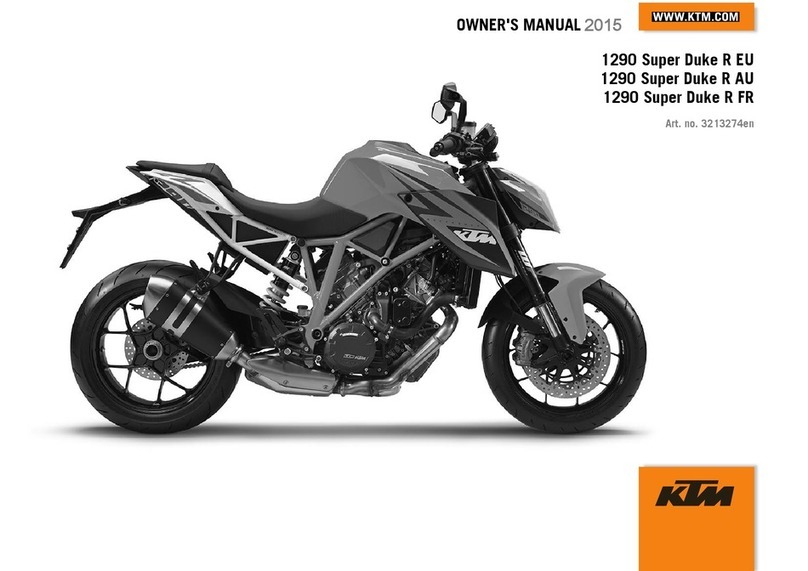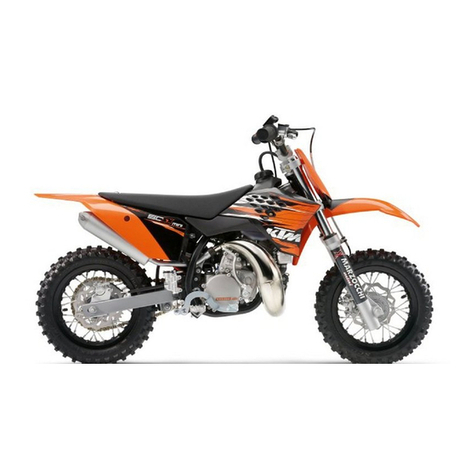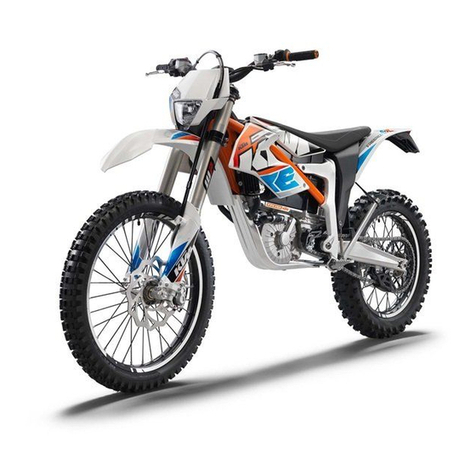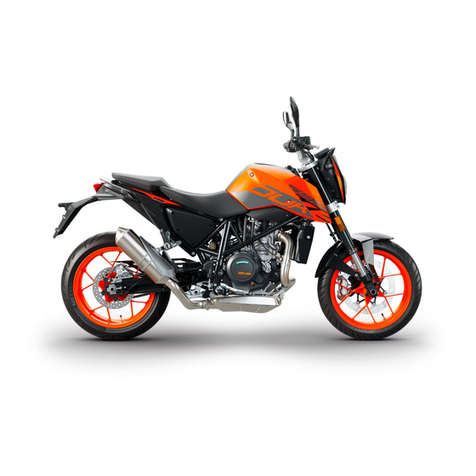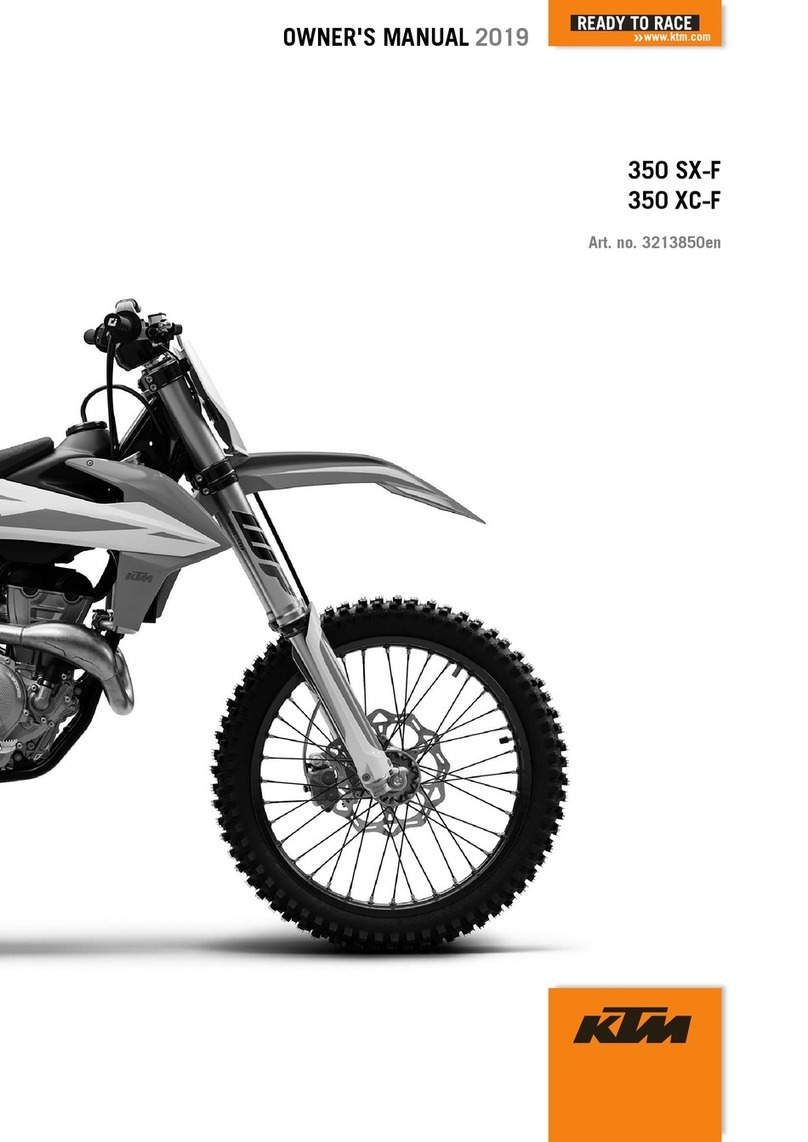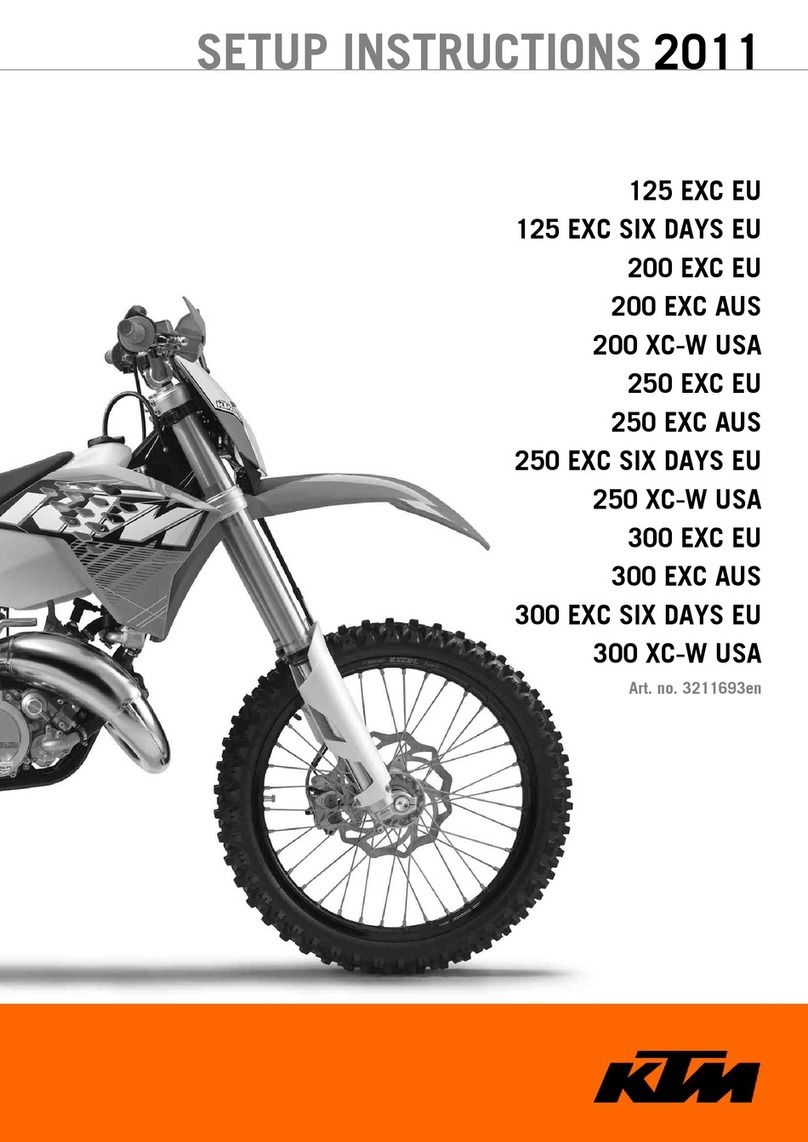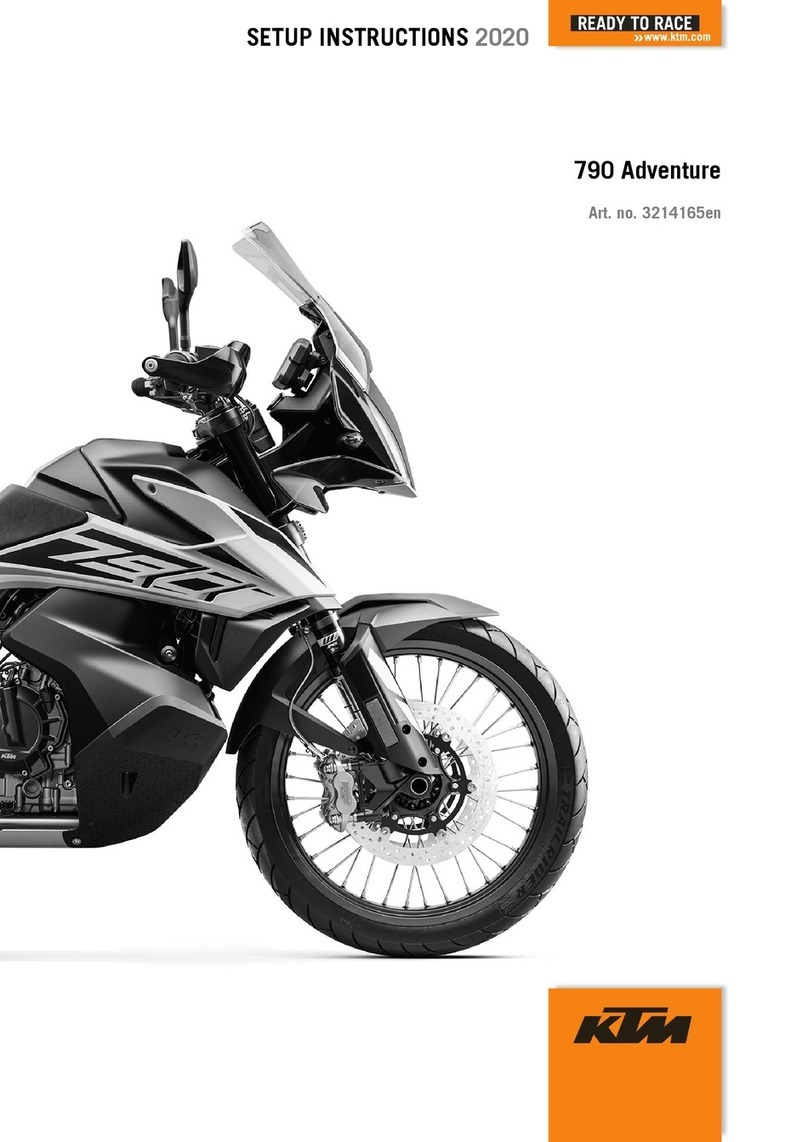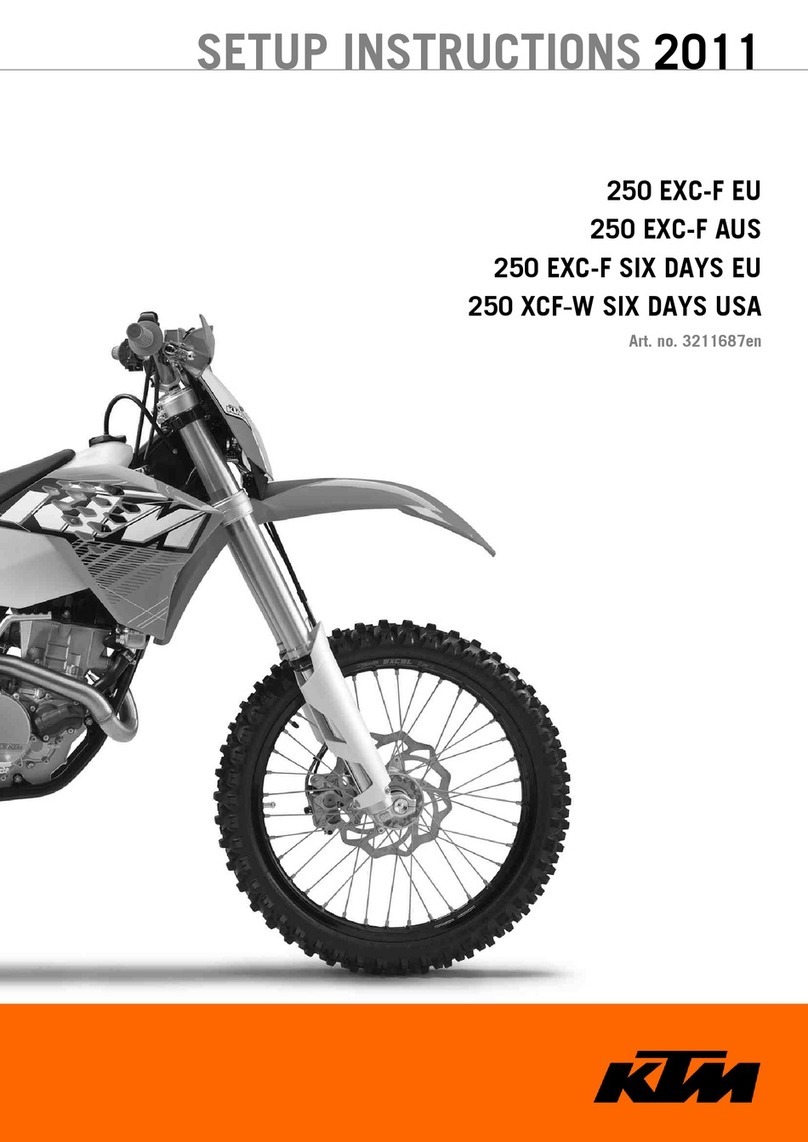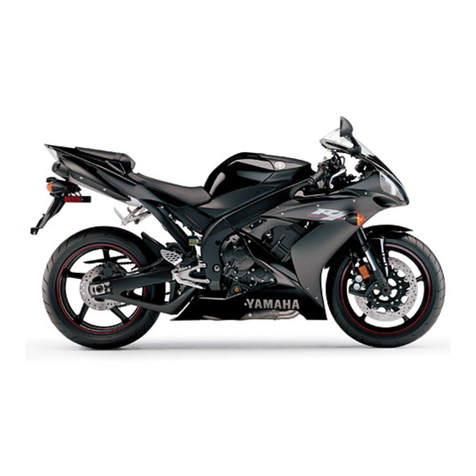
3 WORK 7
Warning
Environmental hazard The battery contains elements that are harmful to the environment.
–Do not discard batteries with the household trash. Dispose of a defective battery in an environmentally compatible manner.
Give the battery to your KTM dealer or to a recycling center that accepts used batteries.
Warning
Environmental hazard Hazardous substances cause environmental damage.
–Oil, grease, filters, fuel, cleaners, brake fluid, etc., should be disposed of as stipulated in applicable regulations.
Info
Even when there is no load on the battery, it discharges steadily.
The charge state and the type of charge are very important for the service life of the battery.
Rapid recharging with a high charging current shortens the battery's service life.
If the charging current, charging voltage and charging time are exceeded, electrolyte escapes through the safety valves. This
reduces the battery capacity.
If the battery is depleted from starting the vehicle repeatedly, the battery must be charged immediately.
If the battery is left in a discharged state for an extended period, it will become over-discharged and sulfate, destroying the
battery.
The battery is maintenance-free, i.e., the acid level does not have to be checked.
If the battery is not charged using the KTM battery charger, the battery must be removed for charging. Otherwise, overvoltage
may damage electronic components. Charge the battery according to the instructions on the battery casing.
Preparatory work
–Switch off all power consumers and switch off the engine.
–Remove the right underride guard. ( p. 6)
100582-10
Main work
–Pull off the red protection cap of the positive terminal extension.
–Connect the positive cable of the charger to the positive terminal extension 1and
the negative cable to an unpainted point on the engine 2. Switch on the battery
charger.
Battery charger (58429074000)
You can also use the battery charger to test the rest potential and start potential of
the battery, and to test the alternator. With this device, you cannot overcharge the
battery.
–Switch off and disconnect the battery charger after charging.
Guideline
Charge the battery regularly when the
motorcycle is not in use
3 months
–Mount the red protection cap of the positive terminal extension.
Finishing work
–Install the right underride guard. ( p. 6)
3.6 Refueling
Danger
Fire hazard Fuel is highly flammable.
–Never refuel the vehicle near open flames or burning cigarettes, and always switch off the engine first. Be careful that no
fuel is spilt, especially on hot vehicle components. Clean up spilt fuel immediately.
–Fuel in the fuel tank expands when warm and can escape if the tank is overfilled. See the notes on refueling.
Warning
Danger of poisoning Fuel is poisonous and a health hazard.
–Avoid contact of the fuel with skin, eyes and clothing. Do not inhale fuel vapors. If fuel gets into your eyes, rinse imme-
diately with water and contact a doctor. Wash affected skin areas immediately with soap and water. If fuel is swallowed,
contact a doctor immediately. Change clothing that has come into contact with fuel.
